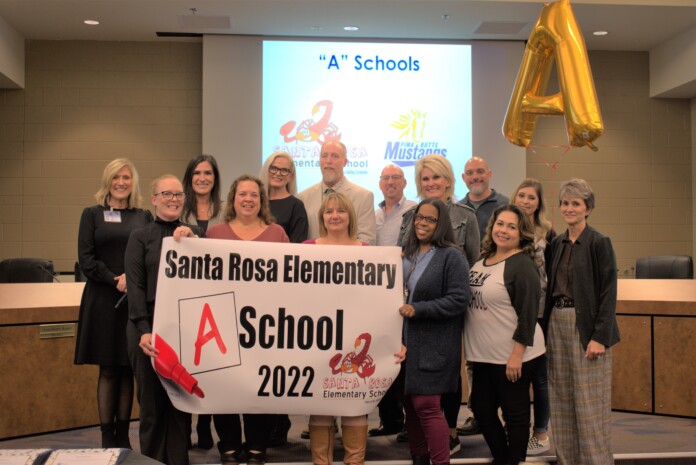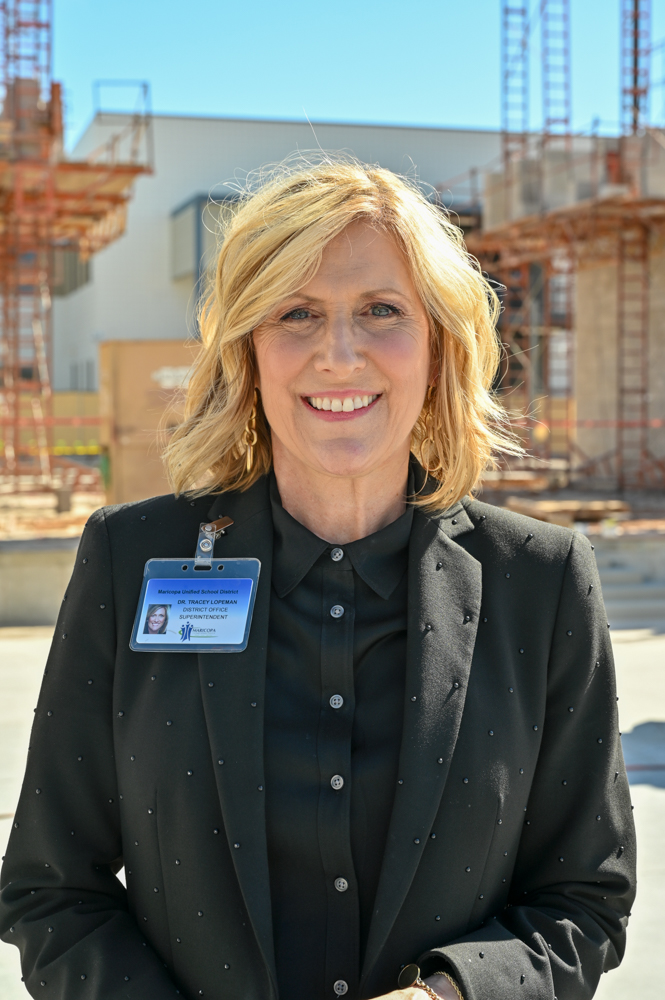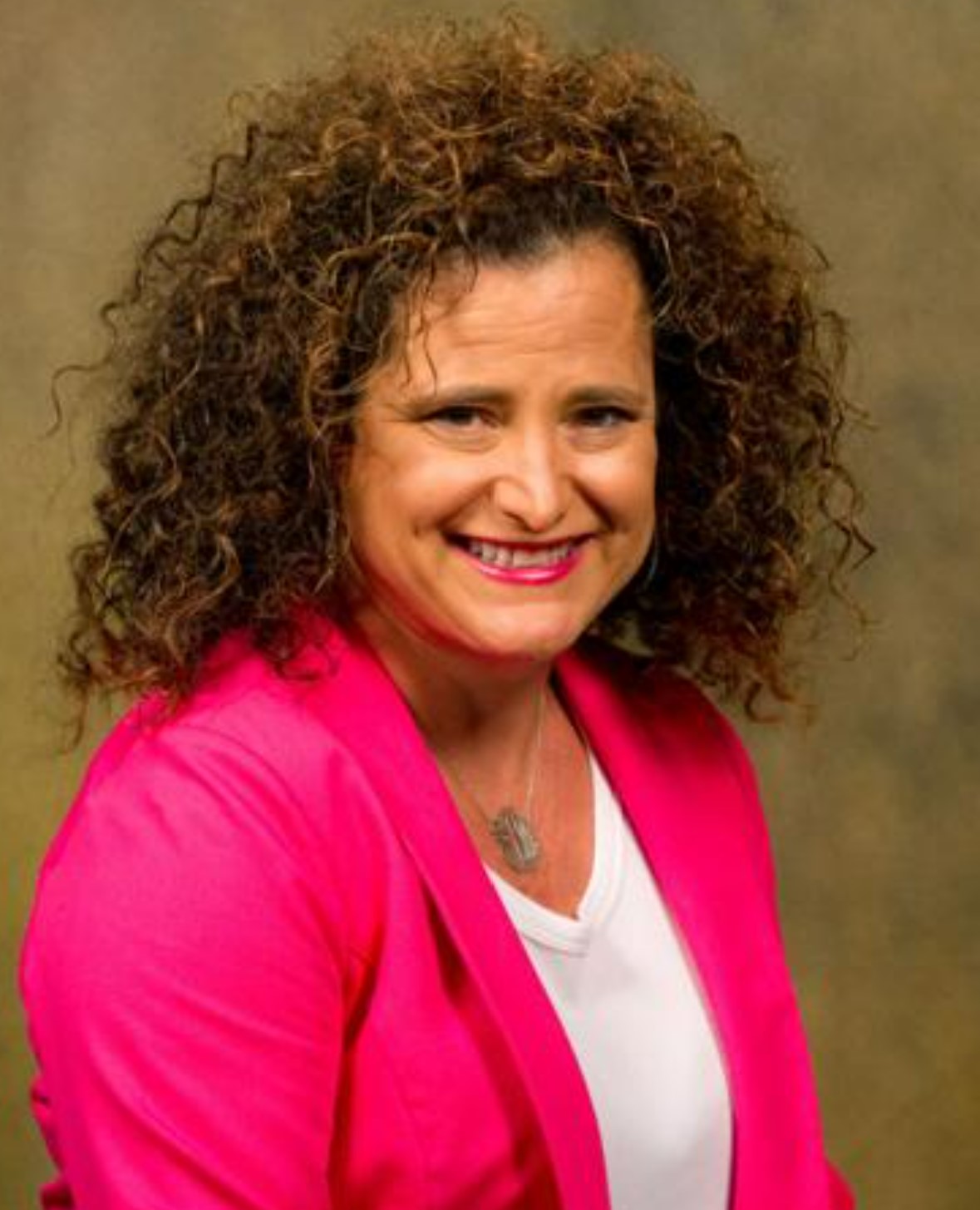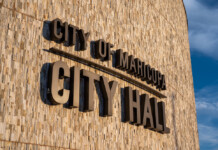
Among the institutions most disrupted by the COVID-19 pandemic was education.
Students were out of classrooms for extended periods. Ostensibly, they were being educated remotely on laptops. But were they? Maricopa Unified School District has a student population of a multitude of socio-economic backgrounds. Although the district provided laptops, some homes did not have internet connectivity.
Did students process and retain information remotely to the degree they might in a classroom? If kids were home alone, were they really tuning in to their lessons?
Not only were students out of their element, but so were their teachers as they learned to administer lessons through an online platform.
There were questions and concerns, but the first letter grades released in the post-pandemic era in November by the Arizona Department of Education suggest Maricopa public schools came through the chaos of the pandemic well.
_________________________
MUSD MAKES THE GRADE
Pima Butte and Santa Rosa elementary schools received grades of “A.” For Santa Rosa, it marked improvement of a full letter grade from 2019, the last time the state gave schools letter grades due to the pandemic.
Elsewhere in the district:
- Maricopa Elementary was less than one point from an A.
- Santa Cruz Elementary was less than one point from an A.
- Maricopa High School improved a full letter grade to a B.
Other MUSD scores:
- Butterfield Elementary School – B
- Saddleback Elementary School – B
- Desert Wind Middle School – C
- Maricopa Wells Middle School – C
_________________________
“The consistent and purposeful efforts of our students, staff and principals have paid off,” MUSD Superintendent Tracey Lopeman said. “Our focus remains on high expectations and providing our students and staff with the tools they need to achieve their full potential.”

The system measures several factors, including: year-to-year student academic growth, proficiency on English language arts, math and science, the proficiency and academic growth of English-language learners; indicators elementary students are ready for success in high school and high school students are ready to succeed in a career or higher education and high school graduation rates.
Grades are for the 2021-22 academic year and based largely on data collected by the state board last spring. The state’s 2022 calculation heavily emphasized student growth and recognized the importance of recovering unfinished learning from the pandemic.
Measures implemented by MUSD to bolster academic performance in the wake of the pandemic may have been a factor.
“When measuring success, there are so many different ways,” said Sheryl Rednor, MUSD assistant superintendent of academic services. “We’re trying to triangulate the data.
“We’ve really strengthened our preschools, starting with our youngest learners. Preschool is now offered on every single campus. We believe in starting them young and coaching them up from a young age.”
MUSD has an elementary-school dual-language program this year.
“We’re also looking at strengthening our families because they are partners in the child’s education. Our Board of Education has been very supportive. We’re making sure the programs we offer provide as much support as possible, not only for our teachers but also our families. We’re seeing growth in our students.”
Standardized tests are one measurement of academic proficiency and progress.
“But you want to be very careful with that,” Rednor said. “It’s not always apples-to-apples, and I want to emphasize the importance of looking at other data in our assessments. I have a lot of people sitting around the table with me, and our focus is on teaching and learning through a lot of different lenses.”

Rednor and her team go into schools and observe classroom activity.
“Last year was tricky for us because we were just coming back from the pandemic,” she said. “There was learning loss, like everywhere else in the nation. Everyone has a story. Remember, we had students last year, third graders, who were in their first year of a quote-unquote regular year in a classroom. Our youngest learners weren’t in brick-and-mortar schools for a period of time.
“We saw kids who were fine, and kids who weren’t fine. So, I don’t want to make a blanket statement that because they lost those years, they were unsuccessful, because many were.”
The high scores among MUSD’s elementary schools seem to reflect the district’s emphasis on starting with its youngest learners in several initiatives.
“What we looked at last year, our first year back for the most part, with our youngest learners was phonetic instruction, building a solid foundation in K through 2,” Rednor said. “Without that, they can’t read. It’s very structured, pretty intense training in letter recognition, words and sounds. We’re really proud of that.”
K-2 teachers were trained on a program of research-based adapted text, which includes strategies to make traditional text accessible to students with a variety of learning styles.
The district also placed a K-12 focus on writing, which may have contributed to Maricopa High’s letter-grade improvement.
“Reading and writing are super important,” Rednor said. “Consistency, repetition, familiarity are so important. When you compare this past year to 2018, it’s just a whole different story. We’re really proud of the work happening here.”
Post-pandemic, the district found about one-third of students had recovered academically, about one-third who were borderline and needed to make improvement, and about one-third in distress who “we needed to focus on how we could best meet their needs,” Rednor said.

“And then we had to put in a social/emotional piece, as well as academic support,” she said. “There were so many chronic absences. You can’t learn if you’re not there. And it wasn’t just students but also staff. So, we anticipated learning loss.”
Students were at home in distance-learning from March 13, 2020, through the conclusion of the academic year.
The 2020-21 school year saw in-classroom education resume in August 2020 (remote learning still was an option), cease in October and resume in January 2021.
“Districts weren’t ready for this,” Rednor said. “This district worked really hard to obtain technology, get people trained and get them the materials and resources they needed. There was a lot of time spent in many districts not just training teachers but also parents, who’d never done it before, including me, by the way. It took some time.”
MUSD made the decision to bring students back as soon as it was safe to do so. It was among the first in the state to do that.
“And that was a very intentional decision, a very wise decision,” Rednor said.
This content was first published in the December edition of InMaricopa magazine.


![Alleged car thief released without charges Phoenix police stop a stolen vehicle on April 20, 2024. [Facebook]](https://www.inmaricopa.com/wp-content/uploads/2024/04/IMG_5040-218x150.jpg)
![Locals find zen with Earth Day drum circle Lizz Fiedorczyk instructs a drum circle at Maricopa Community Center April 22, 2024. [Brian Petersheim Jr.]](https://www.inmaricopa.com/wp-content/uploads/2024/04/PJ_3922-Enhanced-NR-218x150.jpg)










![Alleged car thief released without charges Phoenix police stop a stolen vehicle on April 20, 2024. [Facebook]](https://www.inmaricopa.com/wp-content/uploads/2024/04/IMG_5040-100x70.jpg)
![Locals find zen with Earth Day drum circle Lizz Fiedorczyk instructs a drum circle at Maricopa Community Center April 22, 2024. [Brian Petersheim Jr.]](https://www.inmaricopa.com/wp-content/uploads/2024/04/PJ_3922-Enhanced-NR-100x70.jpg)
